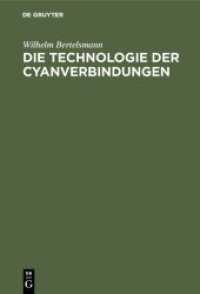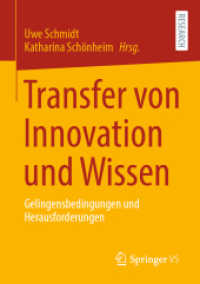Full Description
How to Augment Language Skills outlines ways in which translators and language providers can expand their skillset and how translation technologies can be integrated into language learning and translator training.
This book explains the basics of generative AI, machine translation, and translation memory suites, placing them in a historical context and assessing their fundamental impacts on language skills. It covers what to teach in a specific context, how to teach it, how to assess the result, and how to set up lively class discussions on the many problematic aspects. The exploratory empirical approach is designed to reach across several divides: between language education and translation studies, between technology designers and users, between Western and Asian research, and between abstract ideas and hands-on practice.
Features include:
Fifty-seven technology-related activities for the language and/or translation class.
Recent research on the capacities of generative AI.
Examples of how to conduct a needs analysis in the Higher Education context.
Comparisons of the main teaching methods.
Ways to assess the use of technologies.
Examples in Chinese, Spanish, Catalan, French, and German.
A full glossary explaining the key terms in clear language.
Drawing on years of classroom experience, Pym and Hao illustrate how these skills can be taught in a range of classroom and online activities, making this essential reading for teachers and researchers involved in the teaching of languages and the training of translators.
Contents
Contents
Acknowledgments
Glossary
Preface
Chapter 1: What are language technologies and why should we know about them?
Chapter 2: How do we know which skills to teach?
Chapter 3: Will all language professionals need translation technologies?
Chapter 4: What methods do we use to teach translation technologies?
Chapter 5: What activities can help students use technologies better?
Chapter 6: Who assesses what?
Chapter 7: How do we answer students' questions about language technologies?
Chapter 8: Ways forward
References
Index






